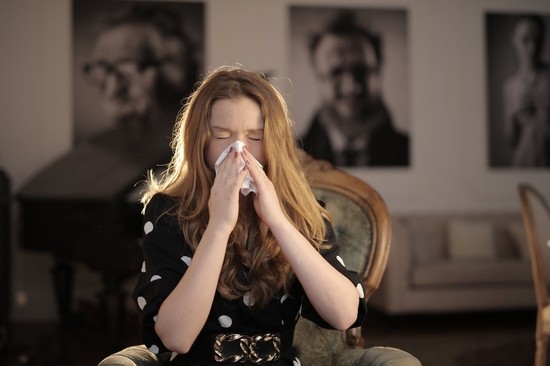
If you’ve ever been stuck with a perpetual case of the sniffles, or worse, a sinus headache that doesn’t seem to go away no matter what you do, then your allergies might be triggered by a bunch of airborne pollutants that have snuck their way into your home. Seasonal allergies are typically rough, but they can take a particularly ugly turn when you’re cooped up at home all day – as most of us are nowadays – yet you still feel unable to breathe properly, with watery eyes and a churning headache. If this sounds familiar to you, then read on to learn more about the most common airborne pollutants that can cause you a world of misery without you even realizing it.
Dust Mites
Even if you take a power duster to your home, cleaning the floor, curtains, couches, and beds day and night, you can never fully get rid of dust mites. Terrifying, isn’t it? Dust mites are microscopic pests that produce some of the most common indoor substances that can trigger a host of allergic reactions and even asthma in most people.
What is even more horrifying is that hundreds of thousands of them can live in bedding, mattresses, furniture, carpets, and according to this article, even with the air conditioner in your home. Since an AC unit does not filter out all the toxins it absorbs, they will keep circulating the air, so the only way to truly clean the air inside your home is by using an air filter.
One thing to keep in mind is that dust mites are not parasites, so they cannot hurt you or your loved ones by leaving a nasty bite. Instead, they feed on the dead skin cells we consistently shed, and thereby create harmful allergens that originate from their fecal pellets. Of course, not only is this completely disgusting to think about, but it also highlights how important it is to protect yourself from these nasty airborne pollutants.
Mold
Check the temperature and humidity levels in your home. If the humidity is higher than what is conceivably healthy for an indoor climate, then you might have patches of mold growing in places you probably don’t notice. And, mold is one of the most harmful pollutants that you can come into contact with. After lowering the humidity, check the bathroom tiles, remove carpeting, move stuff around, and clean up the mold as quickly as possible to breathe cleaner air.
Cigarette Smoke
The negative health effects of secondhand smoke are well documented. However, you may not realize that the smoke itself latches onto clothes, furniture, curtains, and any piece of cloth or fabric in your home, creating a musty order that can be extremely harmful to you in the long run. The lack of proper ventilation allows the tobacco smoke to linger in different areas, making it hard for you to breathe.
Pet Dander
Even if you are not allergic to dogs and cats, you might find yourself sneezing around them more than usual. This is because their dander might increase during certain seasons. Pet dander is a major air pollutant, one that is also invisible to the eye. It resides on the skin and fur of your pets, and it can make life very difficult for you from time to time as it circulates in the air and causes severe allergic reactions for many people.
Pollen
If you or someone you live with has a green thumb, then good for you! Having plants around can easily spruce up any house. This is also the case if you like buying a fresh bouquet every week, they will also liven up your home. Unfortunately, flowers and the like are beautiful vessels for pollen, which will exacerbate any allergy or breathing problems one might have. You don’t always see pollen, and it gets absorbed by the air very quickly, making you susceptible to allergies without even realizing it.
Bacteria and Other Viruses
If you or someone in the house was recently sick with a cold or the flu, then the bacteria or virus will continue to circulate in the air, making you even sicker. This is why in such cases, you need to take the necessary precautions of washing your clothes and bedsheets very well, and also airing out the house.
In general, air pollutants can take on various forms, from the relatively benign allergens that are easy to get rid of to the invisible, more complicated ones that are difficult to control. Ensuring that the air quality in your home is as clean as possible by getting good airflow and circulation going is key. Otherwise, you might continue to suffer from allergies and no amount of antihistamines will help.
